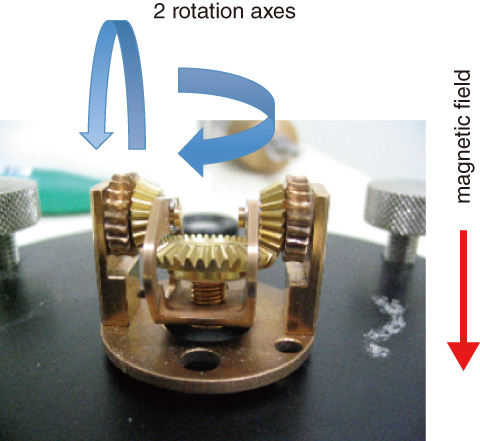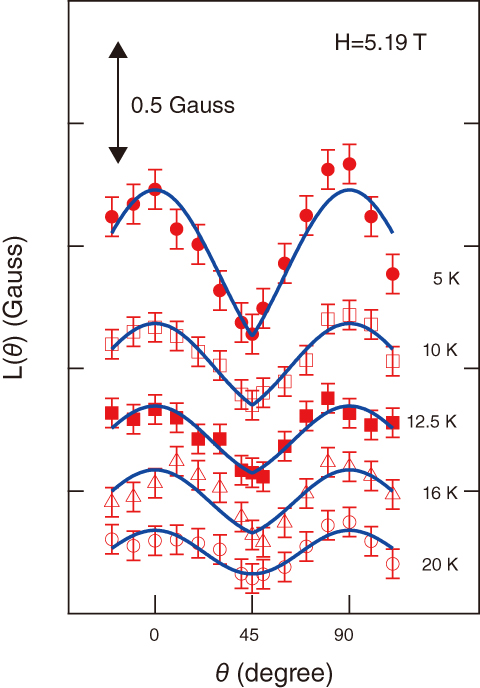
Fig.3-6 Two-axis rotating stage

Fig.3-7 Field-angle ( θ ) dependence of Si-NMR line width, L( θ )
In the superconducting state, two electrons can form a superconducting pair. To form such pairs, an attractive interaction between the electrons is necessary. In conventional superconductors, the origin of the attractive interaction is a lattice vibration. In contrast, a magnetic fluctuation is considered to be the origin in actinide superconducting compounds. Since a high superconducting transition temperature Tc can be expected for magnetic fluctuation-induced superconductivity, it is important to clarify its mechanism.
In URu2Si2, a so-called “hidden order state” appears below 17.5 K (−256 ℃). As the superconducting state appears at lower a temperature of 2 K (−271 ℃), magnetic fluctuation in the hidden order precursor state is believed to induce the superconductivity. However, the hidden order has not been identified in 25 years, which is one of the important issues facing condensed matter physics.
URu2Si2 has 4-fold symmetry in the paramagnetic state above 17.5 K. Recently, however, it has been revealed that the electronic state shows a symmetry breaking from a 4-fold state to a 2-fold state in the hidden ordering regime. In this study, the magnitude of the 2-fold anisotropy was determined precisely using nuclear magnetic resonance (NMR). At first, a two-axis rotating stage was developed to rotate a sample precisely (Fig.3-6). Using this stage, the field angle (θ) dependence of the Si-NMR line width was precisely determined (here θ is defined against the [110] crystal direction in the basal plane). Based on this, the magnitude of the 2-fold anisotropy was found to be smaller than the previously reported value (Fig.3-7).
A future superconductor with a higher Tc is considered to be realizable in a magnetic fluctuation-mediated superconducting system, since the Tc of phonon mediated superconductors has already reached its peak. If a new room-temperature superconductor were to be found, it would be quite useful for improving energy efficiency in electronic devices.
We are going to further investigate actinide compounds to clarify the mechanism behind superconductivity in detail.